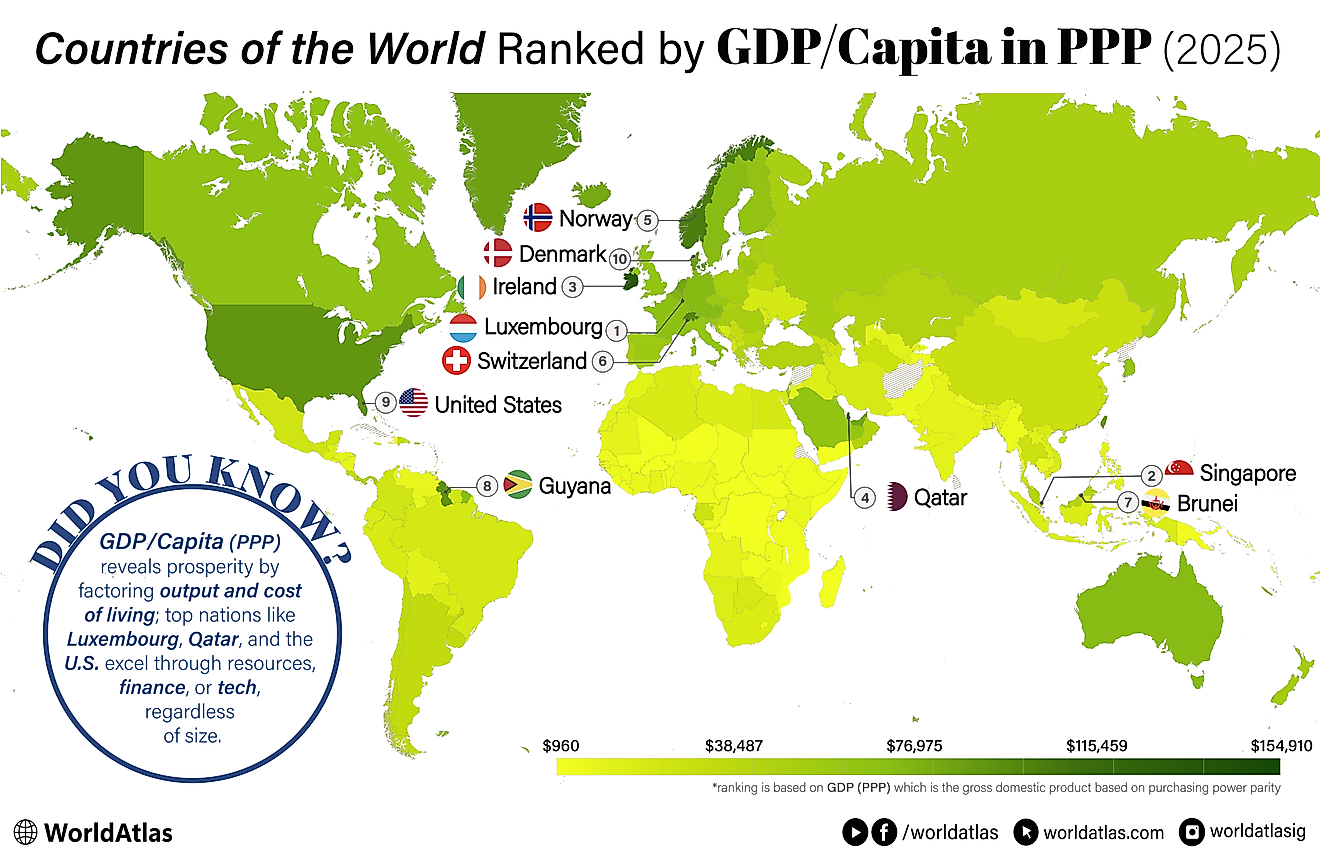Most Efficient Electric Power Infrastructures In The World

Electrical power is vital to industry in the modern age, and the efficiency of a country's electrical power infrastructure can have a profound effect on its economy. Power outages can cause school closures, disrupt businesses and interfere with emergency services, costing the economy billions of dollars over time.
Distributing Power Effectively
In most developed countries, electric power transmission consists of large-scale movement of electrical energy from power plants, or other generating sites, to electrical substations. This is facilitated by a transmission network of interconnected lines. Most transmission lines are comprised of high-voltage three-phase alternating current (AC), although high-voltage direct-current (HVDC) technology is often used for long-distance transmission. Components such as transformers, switches, power lines, submarine cables, and circuit breakers are also utilized. Transmission is generally monitored on a regional basis which varies from country to country.
Although engineers design these networks for efficient transportation, there is always a certain amount of energy loss. After its generation in power plants, energy is lost as it travels through a country's power infrastructure. Less energy is lost with larger high-voltage lines than with smaller, low-voltage lines (such as those in cities or individual buildings), so infrastructures with low population density generally have fewer losses. Electricity thievery, common in countries such as India, Brazil and Russia, is an obvious factor. Weather plays a role as well. But a country's consumption habits, both in individual use and in the corporate and industrial sectors, can have a significant effect on energy loss, as when demand is higher, losses are typically higher, and vice versa.
A select few of the world's countries have highly efficient electrical power infrastructures, sustaining losses of 4% or less over the course of transmission and distribution. Singapore tops the list, with an average interruption time of less than one minute per customer per year. Other standout countries include Iceland and Trinidad and Tobago at 2% losses of output, followed by Slovakia, Gibraltar, and South Korea with 3% losses of electrical output, and Finland, Germany, Israel, and Malaysia where such relative losses stand at 4%. These countries can attribute their success to a variety of factors including abundant natural resources, technological innovation, and forward-thinking governmental policies.
Cutting-Edge Technology
In 2009, Singapore's Energy Market Authority (EMA) embraced smart grid technology by launching their pilot smart grid test program, the Intelligent Energy System (IES). Through this program, they have turned their country's energy infrastructure into a hotbed of experimental technological ingenuity. Monitoring stations are aided by Supervisory Control and Data Acquisition (SCADA) systems, which automatically detect disruptions at all levels of electricity transmission and distribution on the grid. Two-way metering is also utilized in Israel. It allows consumers to choose services based on their needs, creating a more flexible market and reducing energy loss.
With more than half its energy generated by nuclear power, Slovakia is heavily invested in developing safer and more efficient nuclear generation technology. Work is currently being done on a an experimental research reactor, called Allegro, investigating the application of gas-cooled fast neutron nuclear generation. South Korea has also made great strides in the area of nuclear research, developing the Advanced Power Reactor 1400 with an emphasis on improved safety, increased production life, and greater efficiency.
Government Support
In Singapore, construction has begun on two cross-island transmission cable tunnels, the culmination of years of ongoing improvements and modification to the country's infrastructure. Gibraltar has strictly organized its electricity grid, devoting two of its three power-generating stations to civilians, and the third to its Ministry of Defense sector. Finland's government has approved initiatives for a long-term climate and energy strategy, aiming to reduce greenhouse gas emissions and dependence on imported electricity. The ten-year grid capital investment program will include 30 new substations and more than 1,800 miles of new transmission lines. The Energiewende marked a sea change in Germany's energy policy, with a new focus on supply and distributed power generation, increasing energy-saving measures and overall efficiency.
Utilizing Natural Resources
Iceland has taken advantage of its location in the center of a volcanic hot zone by creating an efficient and sustainable energy infrastructure based on geothermal and hydroelectric power. Close to 90% of Iceland's citizens heat their homes with geothermal energy, often for less than half the cost of oil or electric heat. A discovery of natural gas deposits in Israel has allowed the country to dramatically reduce its reliance on coal power. 50% of Israel's energy needs are now provided by natural gas, and the old oil-based plants are being converted to the more efficient gas power plants, with an efficiency increase of 20-40%. Trinidad and Tobago have also capitalized on natural gas resources. Home to one of the largest natural gas processing facilities in the Western Hemisphere, their entire electrical system is fueled by two combined cycle natural gas power plants.
Making Commitments to Renewable Energy
Although Malaysia continues to be a major oil and gas producer, it is also at the forefront of research into biofuels, biomass, solar energy and hydroelectric power. Gibraltar is currently developing a sea-based wave energy plant that could supply up to 15% of its electricity from the pounding surf. Further into mainland Europe, renewable energy accounts for close to 30% of Germany's energy generation, which is even more remarkable given the massive size of its economy.
Most Efficient Electrical Power Infrastructures In The World
| Rank | Country | Electrical Power Lost Over the Course of Transmission and Distribution |
|---|---|---|
| 1 | Singapore | 0% |
| 2 | Iceland | 2% |
| 3 | Trinidad and Tobago | 2% |
| 4 | Slovakia | 3% |
| 5 | Gibraltar | 3% |
| 6 | South Korea | 3% |
| 7 | Finland | 4% |
| 8 | Germany | 4% |
| 9 | Israel | 4% |
| 10 | Malaysia | 4% |











